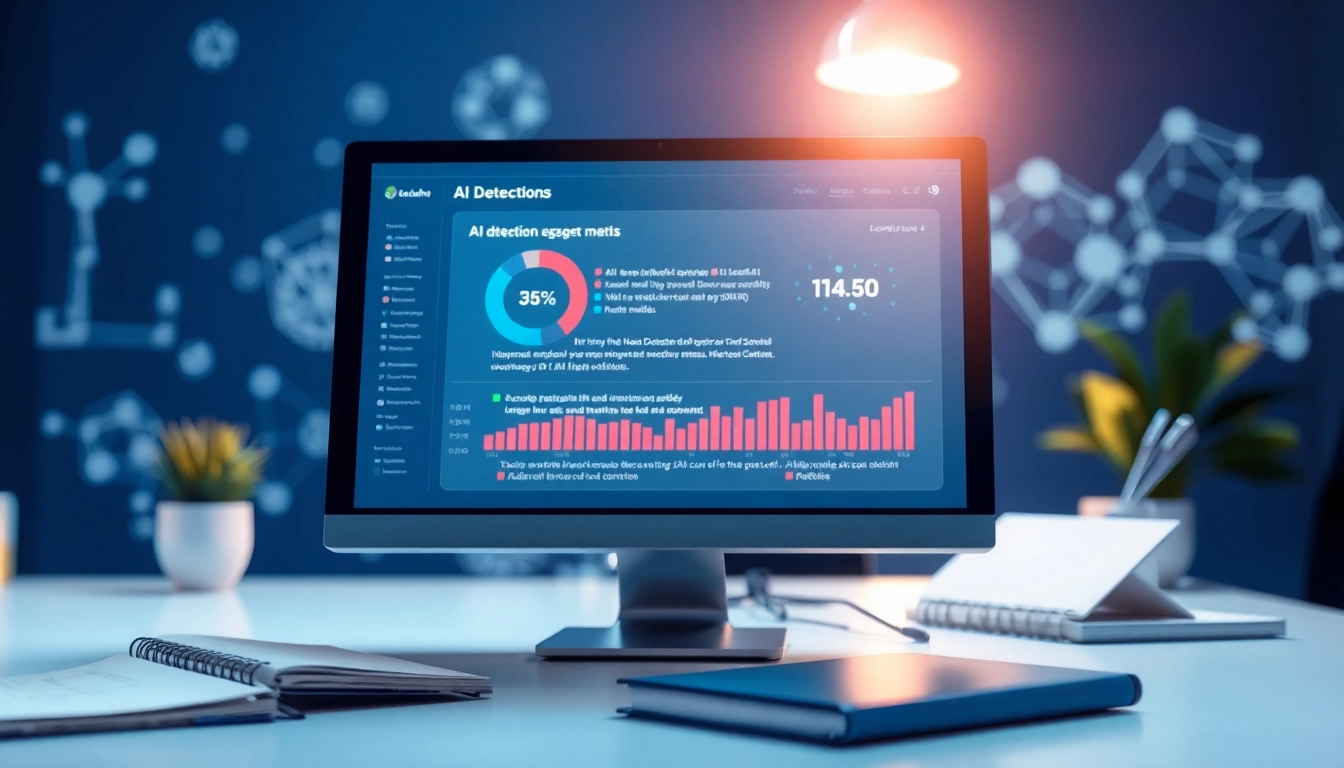Introduction to AI Detection
As artificial intelligence continues to advance and integrated more deeply into various sectors, the ability to discern between human-generated content and that produced by AI technologies has become increasingly vital. This growing need has led to the development of ai detection tools and methodologies. These mechanisms serve a purpose beyond merely identifying AI usage; they promote the understanding of content authenticity and originality in an era where misinformation and plagiarism issues are prevalent.
What is AI Detection?
AI detection refers to the use of specialized tools and algorithms designed to identify whether a piece of text has been created by a human or an artificial intelligence system. These systems rely on various linguistic and statistical analysis techniques to analyze patterns in language usage, idiosyncrasies in sentence structure, and other indicators that differentiate human writing from machine-generated content.
The Importance of Detecting AI Content
The significance of detecting AI-generated content cannot be overstated. In educational settings, maintaining academic integrity requires that students produce original work. For businesses, ensuring that marketing content retains a human touch can foster better connections with consumers. Additionally, as AI-generated text becomes more sophisticated, the potential for misuse increases; hence, having reliable detection tools becomes essential in combating misinformation and promoting transparency.
How AI Detection Works
AI detection tools work by employing a variety of techniques, including:
- Natural Language Processing (NLP): This involves analyzing the syntax, semantics, and grammar of the text to identify characteristics unique to AI-generated writing.
- Machine Learning: Algorithms can learn from a vast dataset of both human and AI-written content, improving their accuracy over time as they are exposed to more variables.
- Statistical Analysis: This includes metrics such as perplexity and burstiness, which help assess the complexity and variability of the writing.
The combination of these methodologies allows AI detectors to provide insights into the likelihood that a given text was generated by AI systems.
Common AI Detection Tools
Overview of Popular AI Detection Tools
In the landscape of AI detection, several tools have emerged that cater to different needs and applications. These tools range from those designed for educational institutions to those serving content creators in various industries. Common features among AI detection tools include:
- Text analysis capabilities, determining the likelihood of AI authorship.
- Multiple language support, accommodating a diverse array of users.
- User-friendly interfaces, enabling easy access for non-technical users.
Comparing Features and Accuracy
When evaluating AI detection tools, features such as accuracy, speed, user experience, and integration capabilities should be considered. Accuracy is crucial, as false positives or negatives can significantly impact users’ decisions. Many tools offer free trials or demo versions, allowing users to assess their accuracy before making a commitment.
Some tools provide detailed analytical reports, including visualizations and confidence scores, adding an extra layer of insight into the AI detection process. Users seeking to choose the right tool should also consider the specific context in which they plan to utilize the AI detection capabilities.
Choosing the Right Tool for Your Needs
Selecting the appropriate AI detection tool depends on various factors, including:
- Purpose: Are you an educator looking to uphold academic integrity or a marketer refining your content’s authenticity?
- Content Type: Different tools may perform better on specific types of content (e.g., essays, marketing copy, social media posts).
- Budget: Availability of free versus premium tools can influence choices, and understanding the return on investment associated with paid options is crucial.
Implementing AI Detection in Practical Scenarios
Using AI Detection in Education
In educational settings, AI detection can play a pivotal role in ensuring that students submit original work. Educators can use detection tools to analyze essays, research papers, and assignments for AI authorship. These tools not only help in maintaining academic honesty but also serve as teaching instruments to raise awareness about the ethical implications of AI usage in academic writing.
By integrating AI detection into the submission process, institutions can encourage students to engage with content more thoughtfully. Detecting AI-generated writing can lead to impactful discussions on authorship, creativity, and the boundaries of AI application in academia.
AI Detection for Content Creators
Content creators, from journalists to digital marketers, can benefit significantly from AI detection technologies. With the rise of AI-generated articles, it is crucial for creators to verify the originality of their content. AI detection tools help identify elements of generated text, allowing creators to modify or enhance the content to ensure it meets their standards for originality and quality.
Additionally, using AI detection can protect brands from potential reputational damage that arises from unverified content. It assures audiences that the material they consume is thoughtfully crafted and authentic.
Challenges in Fair Use and Ethical Considerations
While AI detection tools can be incredibly beneficial, their implementation raises several ethical concerns. The challenge of fair use comes into play when determining how AI-generated content should be treated within the realms of copyright and intellectual property. Clear policies must be established to guide the use of AI-generated content across various industries, especially in publishing and education.
Moreover, ethical considerations must prioritize privacy and data security for users. As detection technologies evolve, providers must ensure they protect user information while delivering accurate results, maintaining trust among their user base.
Best Practices for Accurate AI Detection
Understanding Algorithm Limitations
Despite advancements in AI detection technologies, limitations still exist. No tool is infallible; therefore, users should approach detection results with a critical mindset. Understanding the scope and constraints of specific algorithms can lead to better decision-making, such as using multiple tools for cross-verification and applying a human touch in the evaluation process.
Maintaining Human Oversight
AI detection tools should complement, not replace, human judgment. Incorporating human oversight ensures that context is considered in the interpretation of results. For instance, understanding the intention behind a text can lead to more nuanced conclusions about its originality.
Regular Updates and Accuracy Improvements
With the pace of AI development, it is vital for detection tools to undergo regular updates to maintain their effectiveness. Providers should commit to continual refinement and enhancement of their algorithms, incorporating user feedback and emerging linguistic trends to improve detection capabilities. This approach not only enhances accuracy but also maintains relevance in a rapidly changing technological landscape.
Future Trends in AI Detection
Advancements in Detection Technologies
As AI continues to progress, so too will the technologies developed to detect its output. Future trends may include:
- Deep Learning Techniques: Advanced neural networks could enhance the accuracy and efficiency of detection tools, particularly in understanding nuanced language structures.
- Integration with Other Platforms: The convergence of AI detection with various content management systems may streamline the process of content verification.
- Real-Time Detection: Future applications could allow for instant analysis of content as it is being produced, providing creators with immediate feedback on originality.
The Role of AI in Human Verification
Interestingly, the evolution of AI detection may create a synergistic relationship between AI capabilities and human oversight. As detection tools become more sophisticated, they will facilitate new roles for human reviewers, enabling them to focus on strategic decisions and creative input while the AI handles routine verification tasks.
Preparing for Evolving AI Content Challenges
With the continuous evolution of AI technologies, stakeholders must remain vigilant and adaptable to emerging challenges related to AI-generated content. This adaptability might involve developing responsive policies and frameworks that address ethical issues and changes in societal norms surrounding AI usage. Emphasizing collaboration between technologists, educators, and policymakers will be necessary to navigate this complex landscape effectively.



